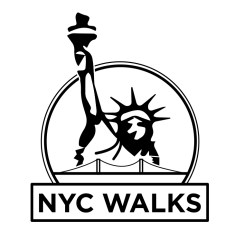Grant’s Tomb
NYC Walks Blog Grant’s Tomb © 2018 by Dr. Philip Ernest Schoenberg. Ghost with a Blog #ghosts
 Ulysses S. Grant, the leading Union General, was considered the greatest American on the Union side after Abraham Lincoln for preserving the Union through his generalship. America made him the highest ranking general ever after George Washington. Although denounced as “Butcher Grant,” his loss of lives was a lesser percentage compared to other Union and Confederate Generals. He was popular with his troops because he would not retreat whether he won or lost unlike previous commanders of the Army of the Potomac. He then served as president of the United States from 1869 to 1877.
Ulysses S. Grant, the leading Union General, was considered the greatest American on the Union side after Abraham Lincoln for preserving the Union through his generalship. America made him the highest ranking general ever after George Washington. Although denounced as “Butcher Grant,” his loss of lives was a lesser percentage compared to other Union and Confederate Generals. He was popular with his troops because he would not retreat whether he won or lost unlike previous commanders of the Army of the Potomac. He then served as president of the United States from 1869 to 1877.
Southern apologists attacked his reputation so declined. But remember he still beat Lee. Alleged that southern historians dominated the writing of the Civil War and managed to damage the reputation of Grant. On the other hand, this may be a case of Peter Principle where Grant like Sherman should have turned down the presidency.
Ron Chernow in his biography argues that Grant as president had a decent record as president despite some scandals. His administration was notable for its defense of human rights. He fought for black rights while trying to reconstruct the South fairly. His administration denounced persecution of the Jews in Romania.
 Ron Chernow chronicles that Grant did have a drinking problem in which he would binge when he was lonely or to relieve great pressure. He was never drunk when he was in combat. Once he was his family full time after he ended military service, drinking ceased to be a problem.
Ron Chernow chronicles that Grant did have a drinking problem in which he would binge when he was lonely or to relieve great pressure. He was never drunk when he was in combat. Once he was his family full time after he ended military service, drinking ceased to be a problem.
Grant received a mansion from his admirers in NYC in 1881 on 3 East 68th Street. This was acceptable ethically at the time.
There was no presidential pension at the time, but he considered military pension inadequate at the time. He failed to make a living as a stockbroker because his partner embezzled funds.
Grant took up smoking during the Civil War because his admires thought he smoked cigars and sent them as gifts. He eventually developed cancer from this habit.
He wrote his Memoirs, the best-selling book of the 19th century after the Bible in America, to help his family. Samuel Clemens (better known as Mark Twain) was his publisher editor. Clemens did not have to make a single grammatical correction. As a patriotic American, Samuel Clemens gave Grant the best realties deal that any author received from a publisher in the nineteenth century Grant in a race with death, barely managed to finish him Memoirs a few days before his death from cancer.
When Grant died, the Lenox family offered a magnificent location on family property in what was then a magnificent location before the building up of Riverside Drive. A black officer who served under Grant organized the memorial association and raised the money to build the tomb and permanently bury Grant Actually Grant’s tomb at 122nd Street and Riverside Drive in NYC’s Harlem overlooking the Hudson River is the third largest mausoleum in the world. He and his wife are entombed there.
 Before World War I, this mausoleum was the visited site in America after Niagara Falls. The site was the popular site for Americans to visit after Niagara Falls in terms of tourist destinations. The property was turned over to the U. S. National Park Service which shamefully neglected the property until the Grant family threatened to sue to have the body re-interned in Galena, Illinois. On April 27, 1997, the restoration effort sanctioned by Congress was completed and the tomb re-dedicated on the 100th anniversary of its opening and Grant’s 175th birthday. Frank Scaturo, who had volunteered at the National Park Service, who spearheaded the restoration effort was hailed as a hero by the Grant family.
Before World War I, this mausoleum was the visited site in America after Niagara Falls. The site was the popular site for Americans to visit after Niagara Falls in terms of tourist destinations. The property was turned over to the U. S. National Park Service which shamefully neglected the property until the Grant family threatened to sue to have the body re-interned in Galena, Illinois. On April 27, 1997, the restoration effort sanctioned by Congress was completed and the tomb re-dedicated on the 100th anniversary of its opening and Grant’s 175th birthday. Frank Scaturo, who had volunteered at the National Park Service, who spearheaded the restoration effort was hailed as a hero by the Grant family.
